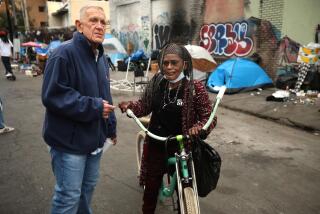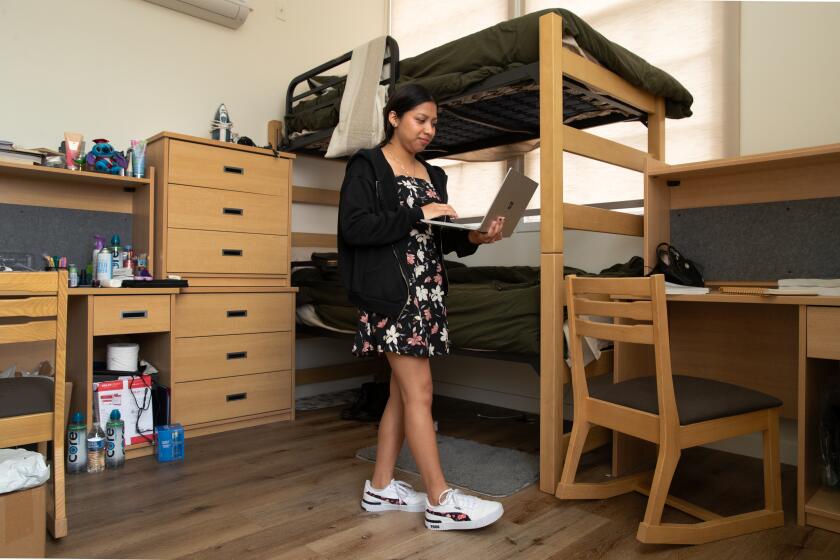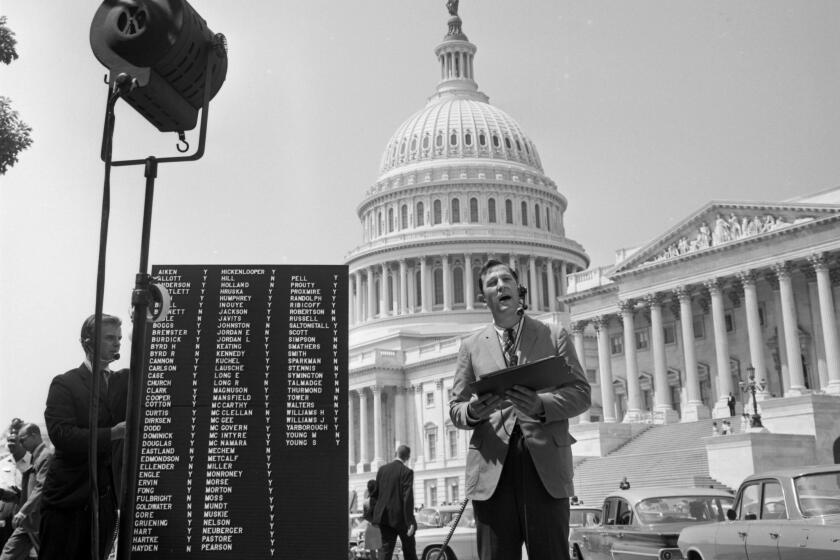Editorial: Surprise! Trump wants to help L.A.’s homeless by cracking down on them

Everyone in Los Angeles County knows how pervasive and intractable a problem homelessness is. Even as we increase the number of shelter beds and build permanent supportive housing and dispense rental subsidies and provide all manner of other services, it’s not enough to stanch the flow of newly homeless people onto the sidewalks.
So the arrival this week of a group of officials from the Trump administration saying they want to learn about homelessness ought to be a hopeful sign. It should be a good thing that the federal government, with all its experts and money and other resources, is interested and wants to help.
If President Trump wants to come in as a partner to work on serious solutions with local officials who have spent years studying and fighting this terribly complex social problem, that would be great. In fact, Mayor Eric Garcetti has been to Washington numerous times asking for federal resources. If the federal government wants to stop its disinvestment in affordable housing or throw its support behind Rep. Maxine Waters’ bill to appropriate $13.27 billion in mandatory emergency funding over five years to federal housing programs, that would be helpful. In 2018, California had more than 129,000 homeless people. Today there are nearly 59,000 homeless people in Los Angeles County alone.
But, sadly, help is not what we’ve come to expect from the Trump administration. The Washington Post reported Tuesday that the president wants to conduct a sweeping “crackdown” on California’s homeless, razing encampments and moving homeless people into “government-backed facilities.” A Trump spokesman said that the president blames “liberal policies of overregulation, excessive taxation, and poor public service delivery” for homelessness and poverty in California, which he has called “a disgrace.”
We don’t know yet exactly what Trump’s plans are. But our fear is that he views homeless people the way he views undocumented immigrants seeking asylum — as dangerous, as a burden on society, as offensive to “real” Americans. In a July interview with Tucker Carlson on Fox News, Trump made it clear that his concerns were not so much for the homeless themselves as for the people who work near them, for police officers on the beat and for foreign visitors who may come to visit. (They “can’t be looking at that,” he said.)
If Trump imagines that he can strong-arm homeless people into government shelters or de facto detention centers, he should snap out of that reverie right now. Homeless people are not undocumented immigrants. Besides, it’s not clear what legal authority he would have to do so.
Trump has called homelessness a “tragedy.” He’s certainly right that it is tragic to have tens of thousands of people living on the streets. But it would also be tragic to look at the poorest, most vulnerable people on the streets and see merely a problem that needs to be swept away.
Garcetti’s office released a letter to Trump saying the mayor looked forward to working with the administration (while noting that the federal government has “woefully underfunded our housing safety net, contributing to homelessness”) and suggesting ways the federal government could help.
On Tuesday, the delegation visited the United Homelessness Response Center downtown, toured skid row and visited the Jordan Downs housing project, among other things. Maybe its members saw how few bathroom facilities homeless people have, began to learn about what programs have worked for formerly homeless people and talked to those who have jobs but still can afford only to live in their cars.
But one visit isn’t going to be enough. We hope they’ll go to Venice and learn about the tension between the homeless and the other residents of the neighborhood there; perhaps they’ll have thoughtful ideas about how to balance the rights of the homeless with the needs of the city.
They should also take the time to hear from formerly homeless people who have been housed — people like Emily Martiniuk, who has thrived in supportive housing, controlled her bipolar illness with medication, and who now speaks to groups around the city about what homeless people need. Maybe they will listen to outreach workers talk about what it takes to gain the trust of a homeless person on the street.
Maybe they will see that this is a complex issue that takes a combination of solutions — and more federal aid, not less.
More to Read
A cure for the common opinion
Get thought-provoking perspectives with our weekly newsletter.
You may occasionally receive promotional content from the Los Angeles Times.





